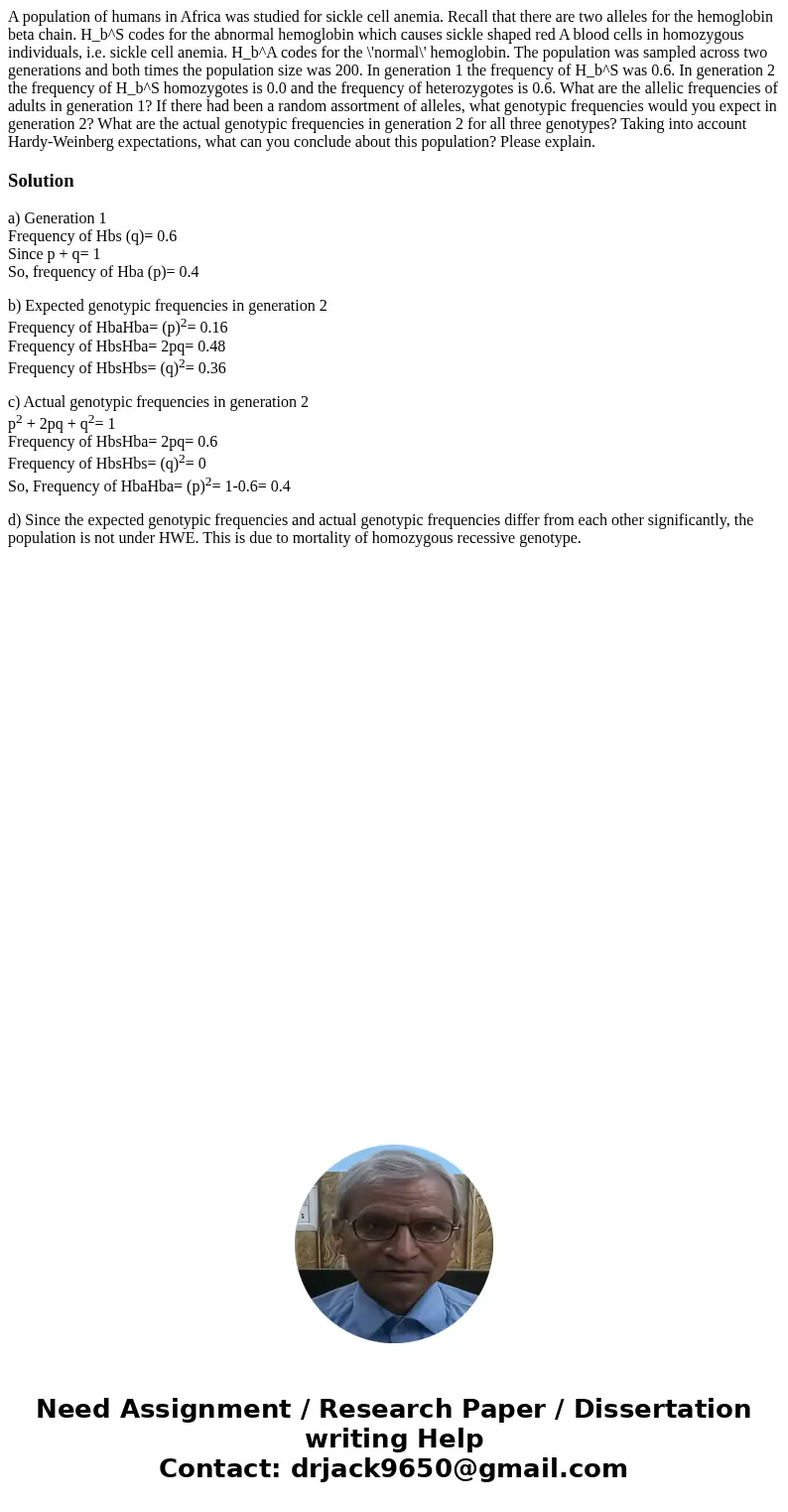A population of humans in Africa was studied for sickle cell
A population of humans in Africa was studied for sickle cell anemia. Recall that there are two alleles for the hemoglobin beta chain. H_b^S codes for the abnormal hemoglobin which causes sickle shaped red A blood cells in homozygous individuals, i.e. sickle cell anemia. H_b^A codes for the \'normal\' hemoglobin. The population was sampled across two generations and both times the population size was 200. In generation 1 the frequency of H_b^S was 0.6. In generation 2 the frequency of H_b^S homozygotes is 0.0 and the frequency of heterozygotes is 0.6. What are the allelic frequencies of adults in generation 1? If there had been a random assortment of alleles, what genotypic frequencies would you expect in generation 2? What are the actual genotypic frequencies in generation 2 for all three genotypes? Taking into account Hardy-Weinberg expectations, what can you conclude about this population? Please explain.
Solution
a) Generation 1
Frequency of Hbs (q)= 0.6
Since p + q= 1
So, frequency of Hba (p)= 0.4
b) Expected genotypic frequencies in generation 2
Frequency of HbaHba= (p)2= 0.16
Frequency of HbsHba= 2pq= 0.48
Frequency of HbsHbs= (q)2= 0.36
c) Actual genotypic frequencies in generation 2
p2 + 2pq + q2= 1
Frequency of HbsHba= 2pq= 0.6
Frequency of HbsHbs= (q)2= 0
So, Frequency of HbaHba= (p)2= 1-0.6= 0.4
d) Since the expected genotypic frequencies and actual genotypic frequencies differ from each other significantly, the population is not under HWE. This is due to mortality of homozygous recessive genotype.

 Homework Sourse
Homework Sourse